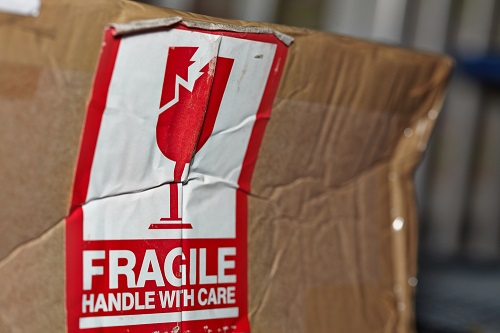Products Shipped to the Wrong Location, Damaged: Is Coverage Lost?

By: Big “I” Virtual University Faculty
A commercial insured shipped a completed part to a customer but sent it to the wrong branch location in Georgia. The Georgia location did nothing other than call the insured and say the parts were mailed to the wrong location. The insured contacted the carrier for hire to pick up the parts and send them to the correct branch in California. When the parts arrived in California, one aspect of the part was missing and one aspect was damaged.
The carrier says that once the parts were received in Georgia, it was out of the insured’s care, custody and control and is no longer an insurable interest. The insured contends that since he ordered the pickup of the parts at the Georgia location and paid for the freight to California, they were still under his care, custody and control.
There was no Free on Board (FOB) agreement specifying at what point the respective obligations, costs and risks involved in the delivery of goods shift from the seller to the buyer and there was no insurance purchased from the hired cargo carriers. The ISO Building and Personal Property Coverage form provides $10,000 transportation coverage.
Q: Did the insured lose his insurable interest when the parts were received by the wrong location?
Response 1: I hope you weren’t relying on the commercial property policy to provide coverage. When shipping products, always purchase inland marine coverage.
Under the Coverage Extensions, Transportation section the ISO Building and Personal Property policy says:
We will pay for direct “loss” caused by a Covered Cause of Loss to your Covered Property, including covered personal property of others while it is in or on a vehicle, including loading and unloading of the property. The most we will pay for “loss” in any one occurrence is $10,000.
Look back at the definition of covered property, which requires that the insured be legally liable. Without a contract to create legal liability, can the insured be found legally liable? The transportation company might be legally liable, but unless there is a warehouse-to-warehouse contract, assigning legal liability to the insured would be difficult.
Even if an agreement covered the property, the forms say the damage must be caused by a “covered cause of loss.” What was the covered cause of loss? I think the carrier may be correct on this one.
Response 2: In this situation, “insurable interest” depends upon the contract of sale, which spells out exactly when the shipper stops being responsible for the property. That point could occur when the property leaves the seller’s premises, when it arrives at the buyer’s premises or at some other place in between.
Once you’ve determined that, you can decide exactly what perils you want to claim and which coverages you wish to claim under. The transportation coverage in 5.(p) only applies if the covered property is “in or on a vehicle, including loading or unloading of the property.” If it wasn’t on a vehicle, you might need to consider the Property Off Premises section of the policy.
Response 3: Something in transit by a third party is arguably not in the insured’s custody, care or control. As for the transportation coverage, what was the covered cause of loss and when and where did it occur?
If the insured is shipping parts around the country, the ISO Building and Personal Property Coverage form is not one designed to protect this type of exposure.
Response 4: A case could be made that since the part ended up at the wrong location, it was still in transit until it got to the intended location. However, the carrier may counter that the insured’s error got it to the wrong location, so it was not in transit anymore. This is a discussion more appropriately directed to the carrier’s claims director.
Response 5: I would like to see the carrier’s declination letter regarding their care, custody and control reasoning. When it was shipped, the insured no longer had care or custody, but when it was reshipped, it might be argued that they had control.
Response 6: I do not think the reason given by the insurer for excluding this loss is supportable. The insured seems to have had an insurable interest, even in the apparent absence of any FOB or any other transit contract language. I also do not see care, custody or control as having a bearing on this situation.
However, I still believe there is no coverage for this loss as described. This is due to Limitation c. (1) (e): Missing Property, which states:
Property that is missing, where the only evidence of the “loss” is a shortage disclosed on taking inventory, or other instances where there is no physical evidence to show what happened to the property.
This question was originally submitted by an agent through the VU’s Ask an Expert Service, with responses curated from multiple VU faculty members. Answers to other coverage questions are available on the VU website. If you need help accessing the website, request login information.










